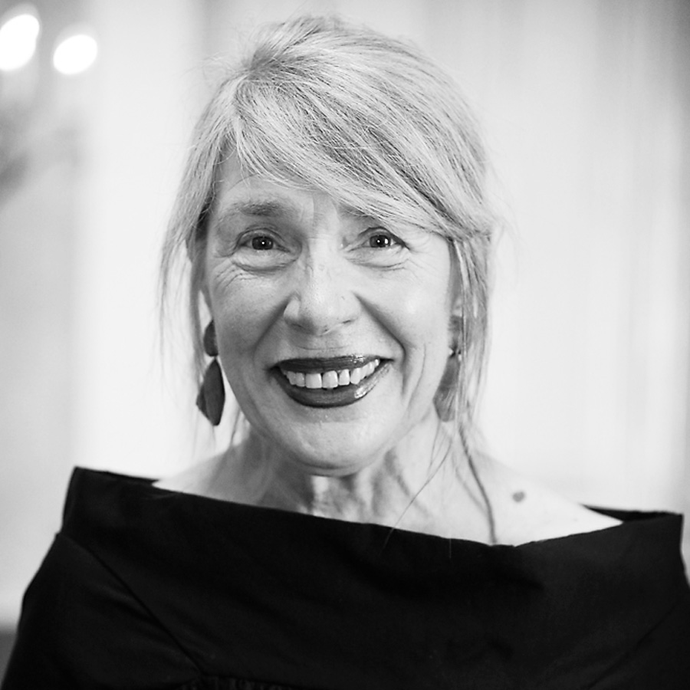
Martha Jungwirth
Martha Jungwirth is a renowned Austrian artist who still resides and creates in her hometown. Having worked in the art world for many decades, Jungwirth, now in her eighties, has firmly established herself as a notable figure.
Martha Jungwirth's Biography: Artist of Dynamic Evolution
Martha Jungwirth was born on January 15, 1940, in Vienna and soon garnered acclaim for her artistic talent. Early in her career, she received prestigious awards including the Monsignor-Otto-Mauer Prize in 1961, followed by the Theodor Körner Prize in 1964 and the Joan Miró Prize in 1966. Considered one of the most innovative artists among the Neue Wilde painters in Austria during the 1980s, Jungwirth's style oscillates between gestural abstraction and formal composition.
Studying under Prof. Carl Unger at the University of Applied Arts Vienna, Jungwirth graduated in 1963 and later taught at the same institution from 1967 to 1977. She also shared her expertise at the International Summer Academy in Salzburg in 1991 and the Summer Academy in Berlin in 1992. In 1968, she became the sole female member of the artists' group known as Wirklichkeiten (Realities), which included five male colleagues. The group was formed in 1968 by Otto Breicha, who later became the director of Salzburg's Rupertinum, for an exhibition at the Vienna Secession. Her inclusion was notable, as art historian Alfred Schmeller, her future husband, famously described her as "The first crocodile is a female crocodile," a phrase that sparked attention within the art community.
Martha Jungwirth's influence extends globally through numerous solo exhibitions at esteemed venues such as the Guggenheim Museum in Bilbao and Venice Biennale (2024), Albertina Museum Vienna (2018), Galerie Haas Zürich (2017), Galerie Krinzinger Vienna (2016), and Kunsthalle Krems (2014). Her retrospective exhibitions have garnered significant acclaim, including "Martha Jungwirth: Retrospektive" at Kunsthalle Krems in 2014. In recognition of her contributions, she received the Austrian Decoration of Honor for Science and Art in 2012.
Martha Jungwirth Art: Explorations in Color and Texture
Martha Jungwirth's artistic style is a testament to her profound engagement with abstraction and personal expression. She has spent over six decades forging a singular approach to painting that intertwines with her intimate observations of the world. Describing her art as akin to a diary, Jungwirth compositions, and portraits reveal themselves to her during the act of painting, as she collaborates with her materials to create works that exist in a delicate balance between chance and calculation. The physical intensity of her tactile surfaces and bursts of color harmonize with her sensitivity and restraint.
Her technique unfolds in a realm where chance and calculation converge. Each painting is an adventure, as compositions reveal themselves during the act of painting. Jungwirth draws inspiration from a myriad of sources—personal encounters, global travels, art history, Greek mythology, and political events—using these as pretexts for capturing fleeting, internal impulses in paint and watercolor. This approach imbues her works with a palpable sense of self, transcending the rational principles of Minimalism and Conceptualism prevalent during the 1960s and 1970s.
The physicality of Jungwirth's art is striking, characterized by tactile surfaces and bursts of color that harmonize sensitivity with restraint. Her vivid color palette, like in the artworks from the series "Cyclades" (2001) and "Cambodia" (2004), often explores corporeal registers, featuring fleshy pinks, blood reds, and bruised magentas that carry emotional weight. Her artworks are continuous experimentation with an open outcome, where energetic, colorful marks on canvas or paper interact through layering, overlapping, and blurring. This interplay between abstraction and subtle representational elements defines her artistic spectrum, ranging from densely stroked paintings to those marked by spare brushwork.
The significance of the artist is also captured in books, such as "Martha Jungwirth: Retrospective" (2015). This comprehensive monograph accompanies her inaugural major retrospective, showcasing artworks spanning the last five decades.
Martha Jungwirth Art for Sale: Collecting a Legacy of Austrian Art History
Martha Jungwirth's artworks are highly sought after in the contemporary art market, highlighting her role as a central figure in Austrian art history. Collectors interested in Martha Jungwirth's art have a variety of avenues to explore when seeking to acquire her works. Galleries specializing in contemporary art, such as Galerie Krinzinger in Vienna, Thaddaeus Ropac Gallery in London, or Galerie Haas in Zurich, frequently exhibit and offer her paintings and watercolors for sale.
Martha Jungwirth's artworks have recently garnered significant attention in the art market, with several notable sales at prestigious auction houses. For instance, at Dorotheum in 2023, her piece "Untitled" (2020) fetched an impressive USD 220,000, highlighting strong demand and appreciation for her work. Another artwork from 2014, also titled "Untitled," achieved a noteworthy price of USD 150,000, surpassing its estimated value of USD 30,000 to USD 50,000. These sales underscore the growing recognition and value of Jungwirth's art, reflecting the diverse appeal and investment potential of her paintings.
Auctions present another avenue for acquiring Martha Jungwirth's artworks, with major auction houses like Christie's and Sotheby's occasionally featuring her pieces in their contemporary art sales. Participating in auctions allows collectors to compete for artworks in a transparent marketplace, often attracting global interest and setting benchmark prices for Jungwirth's art.
Years:
Born in 1940
Country:
Austria, Vienna
Gallery: